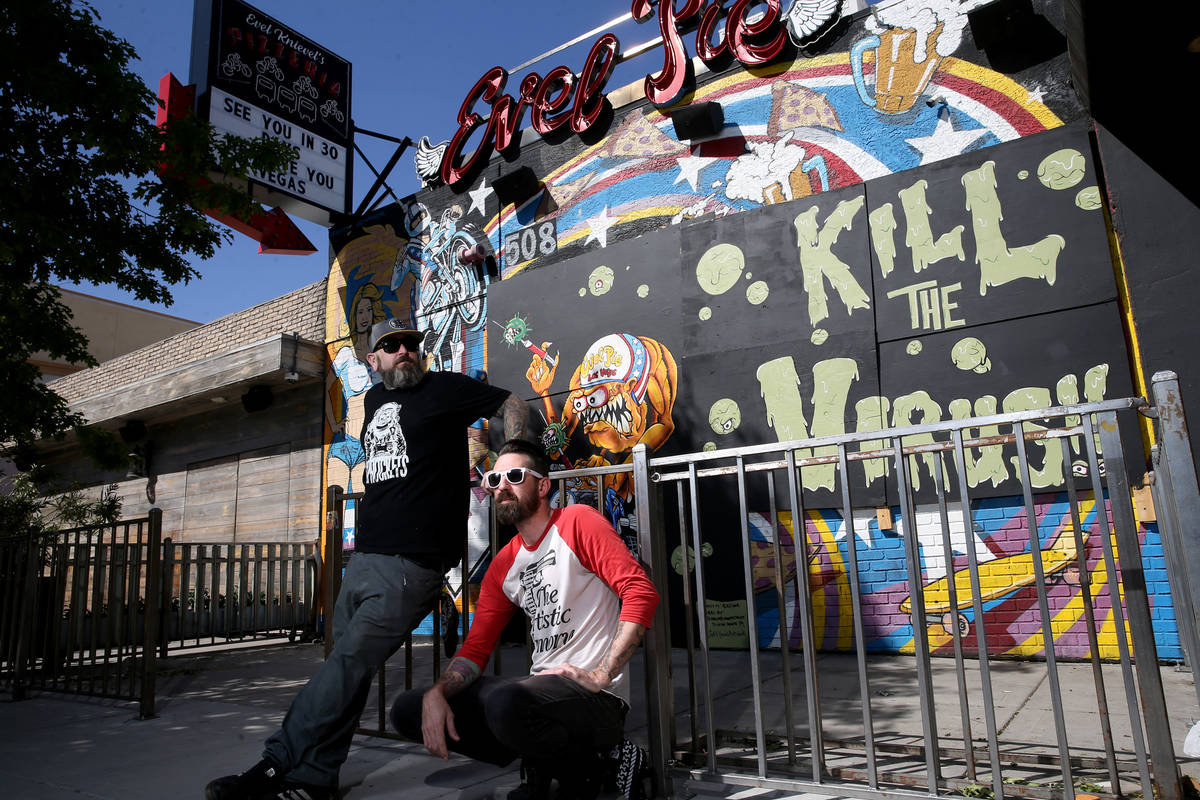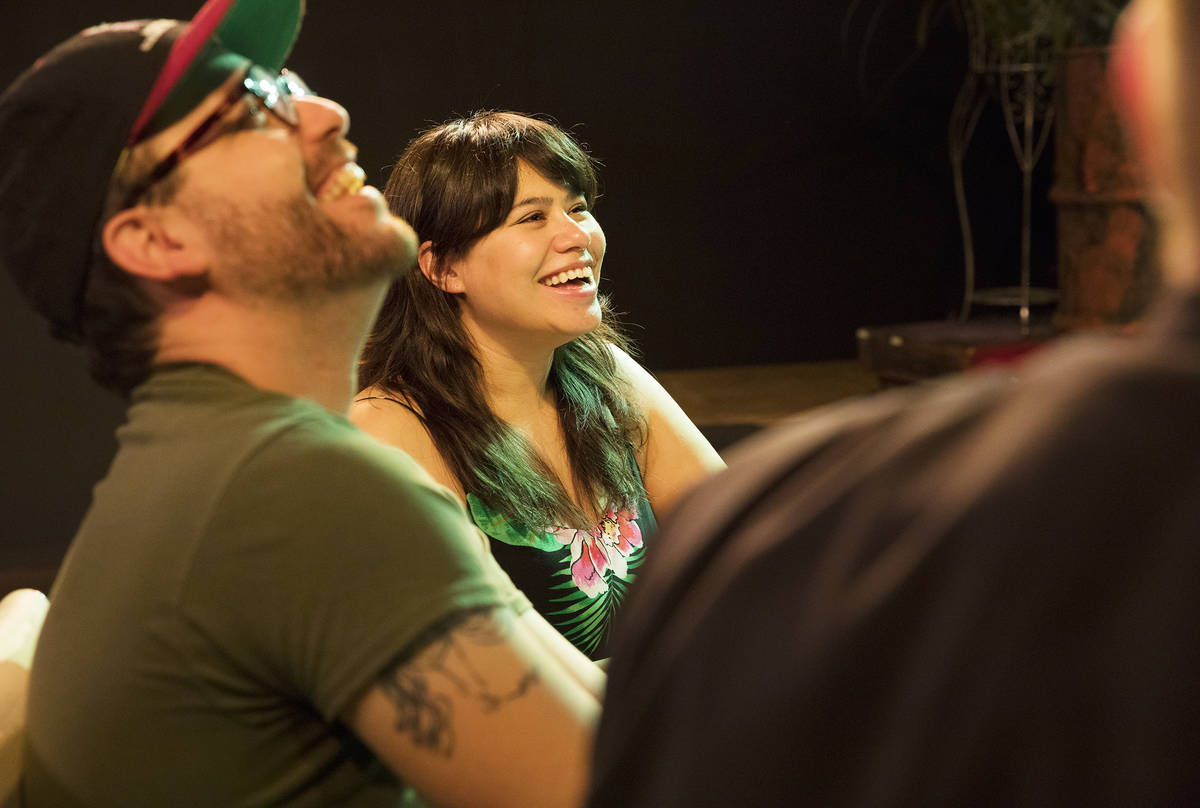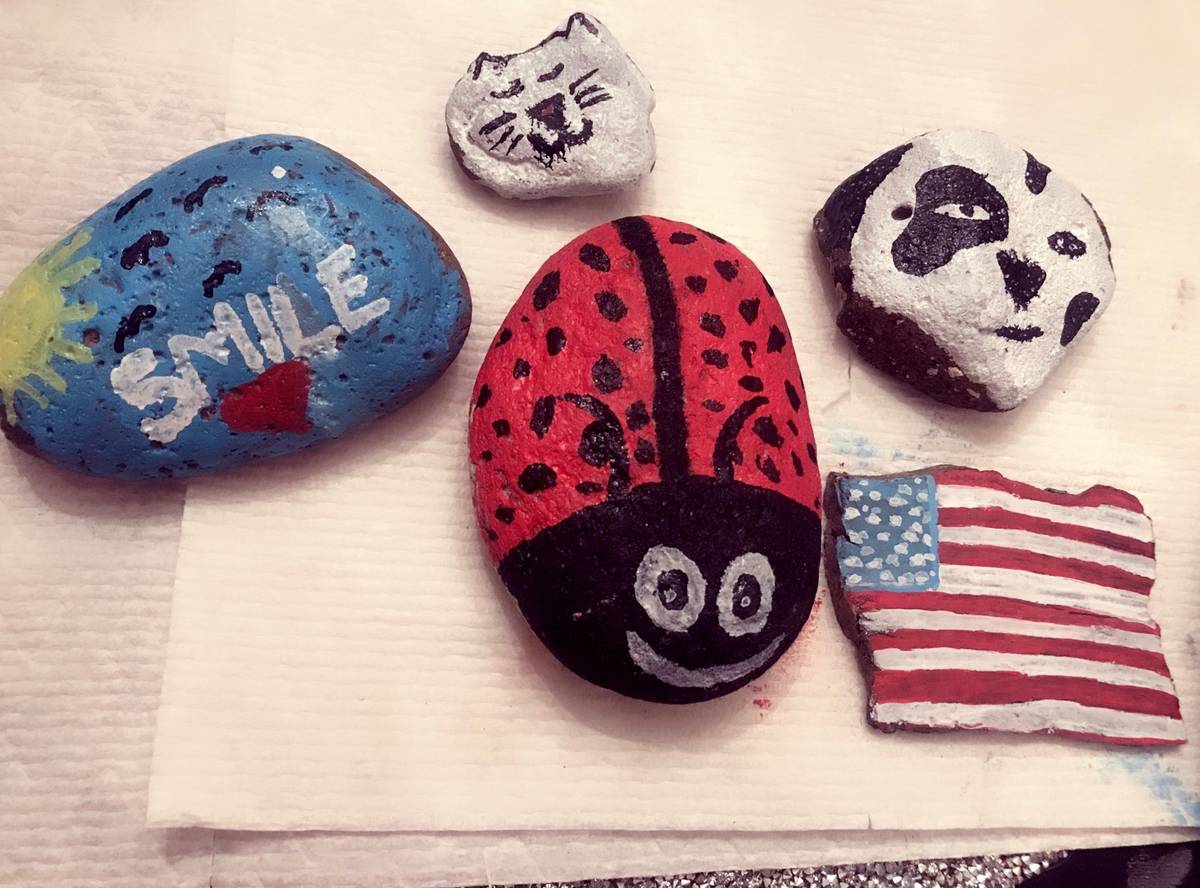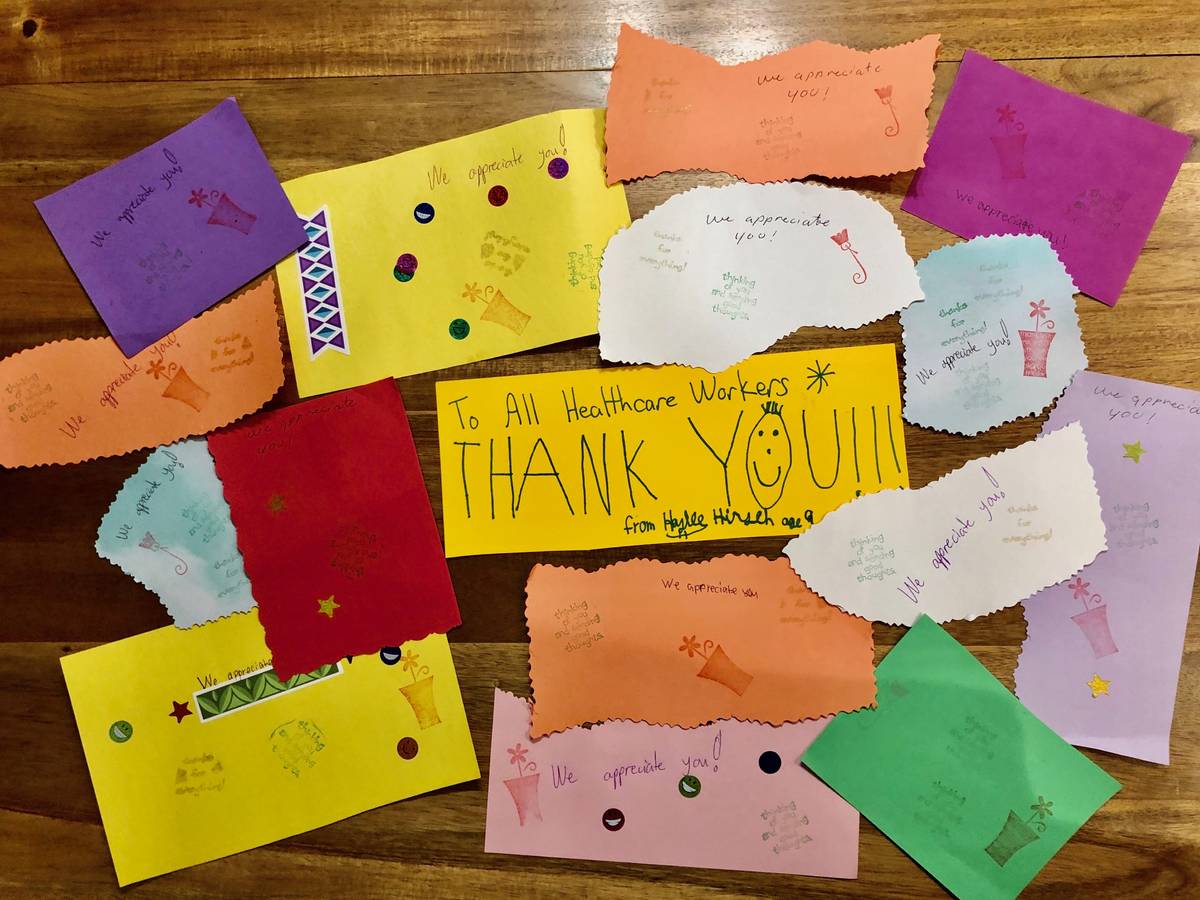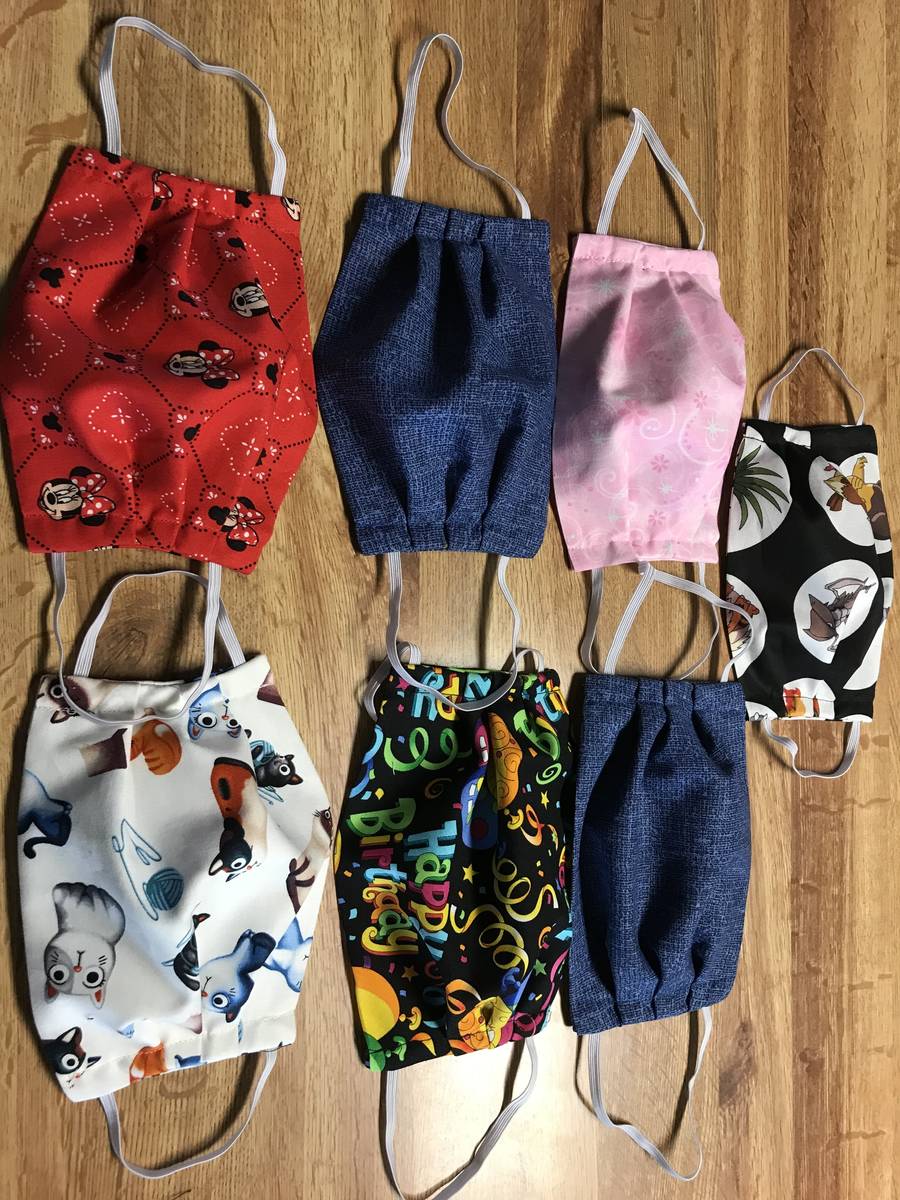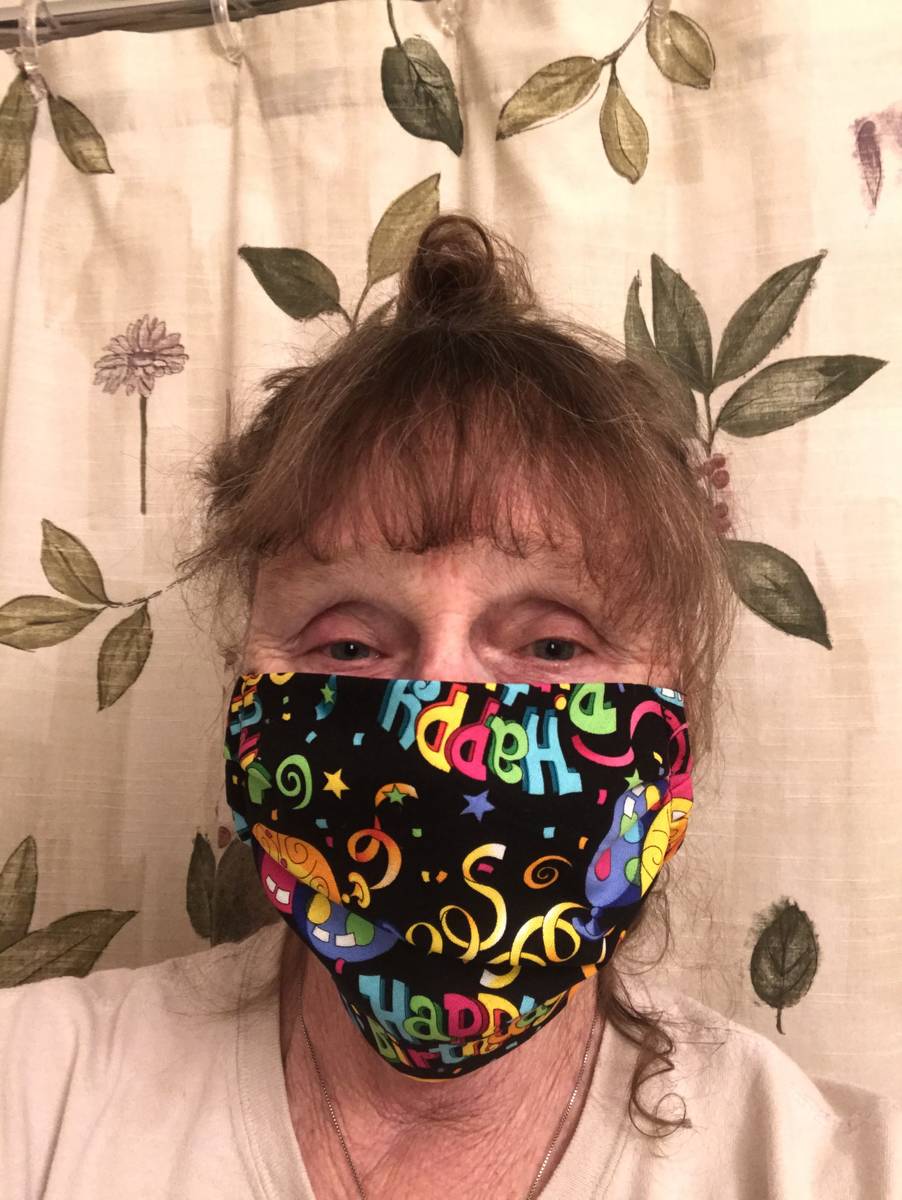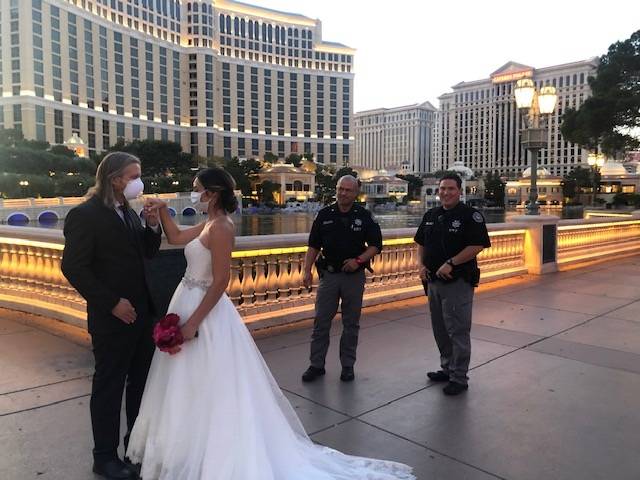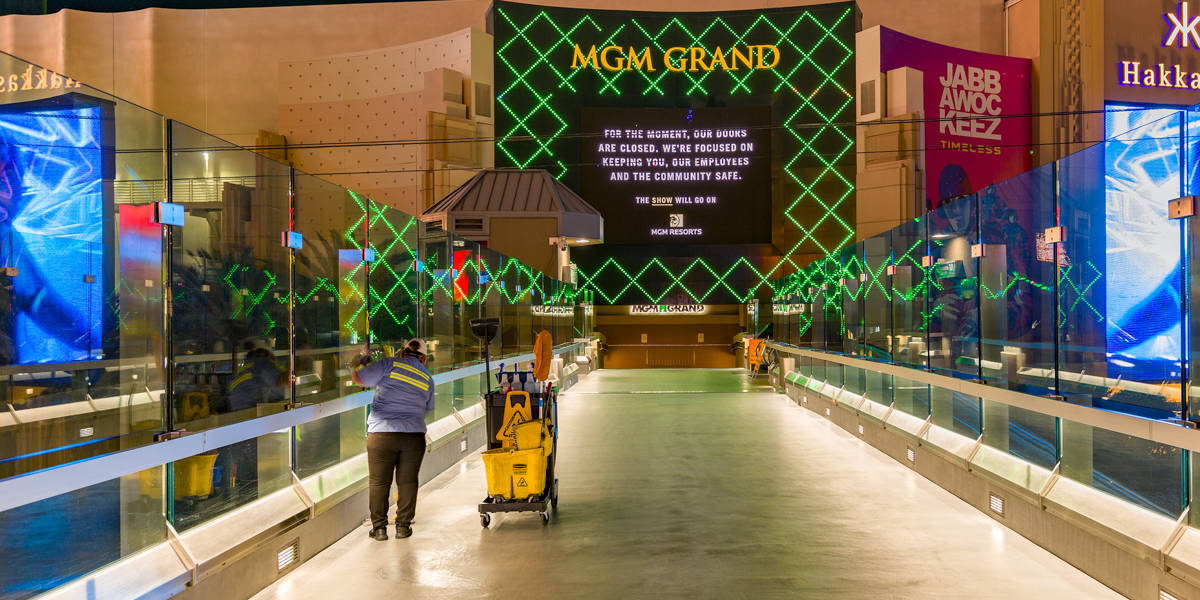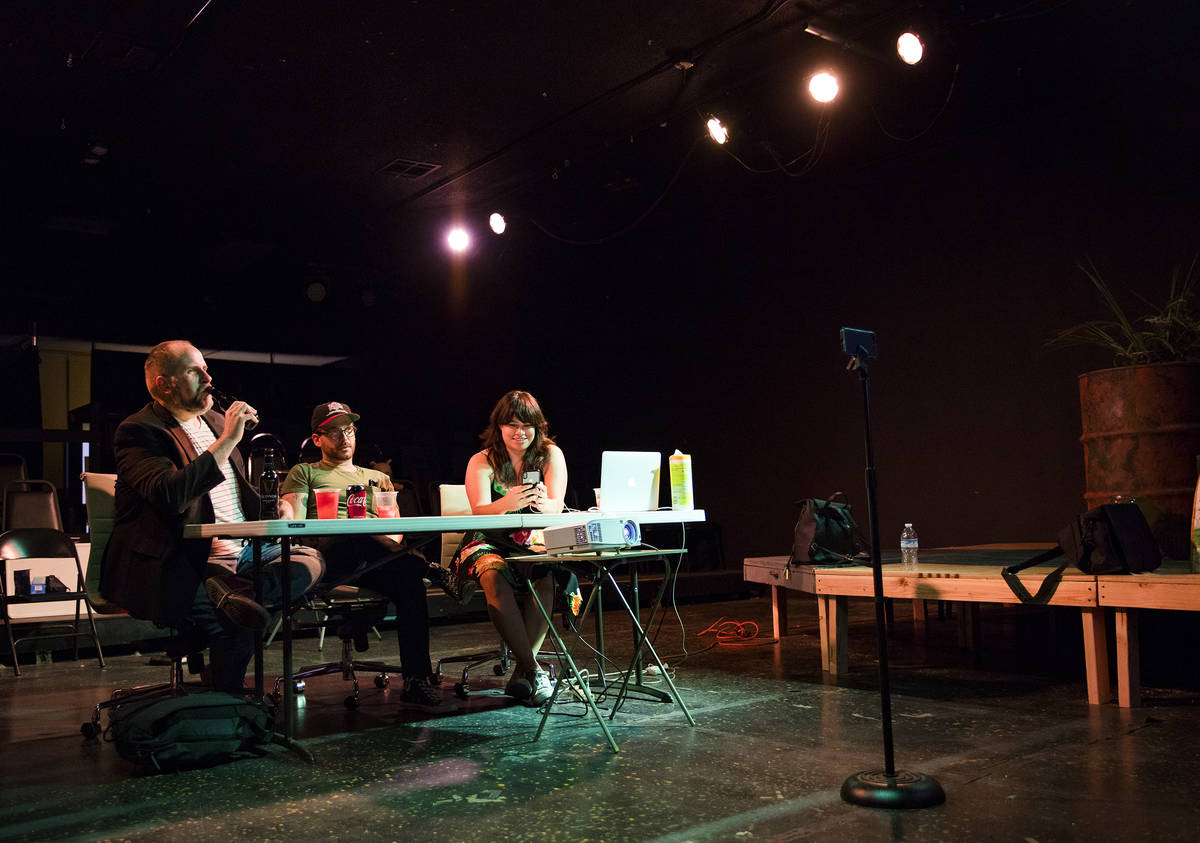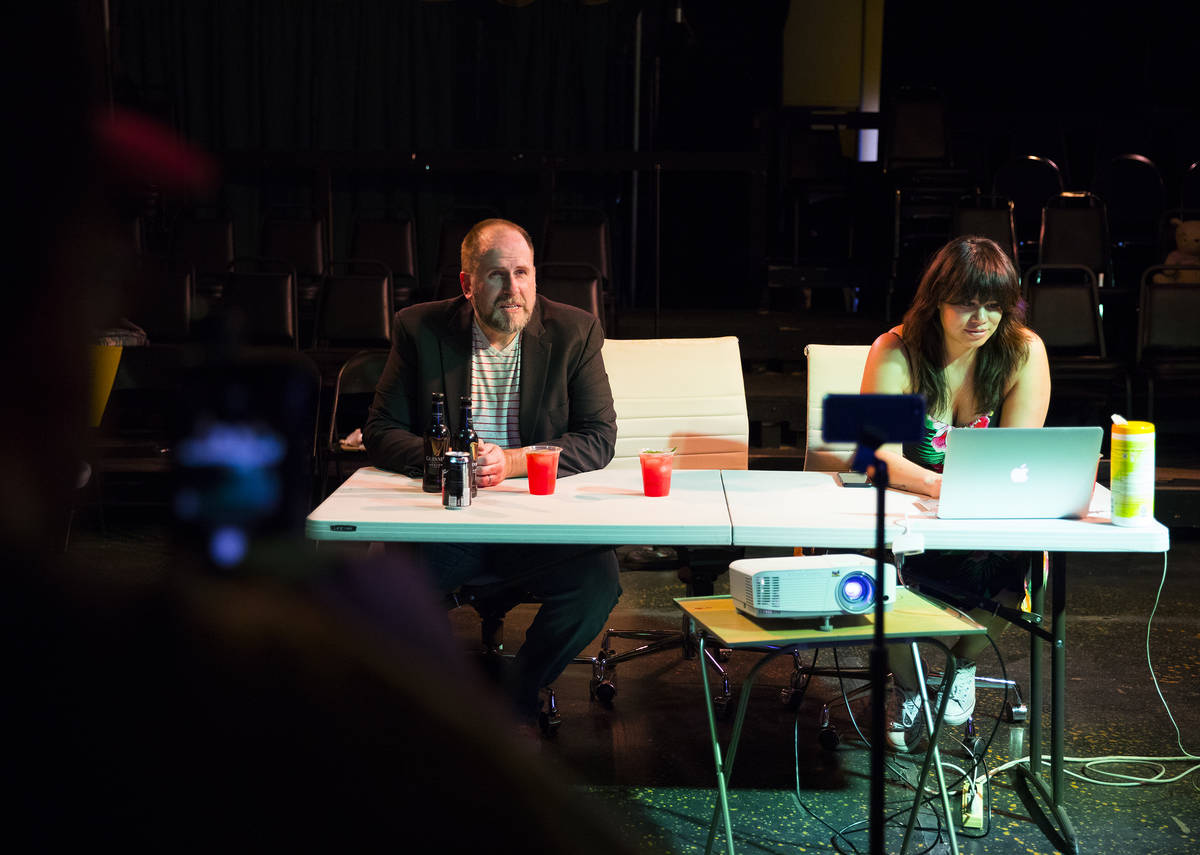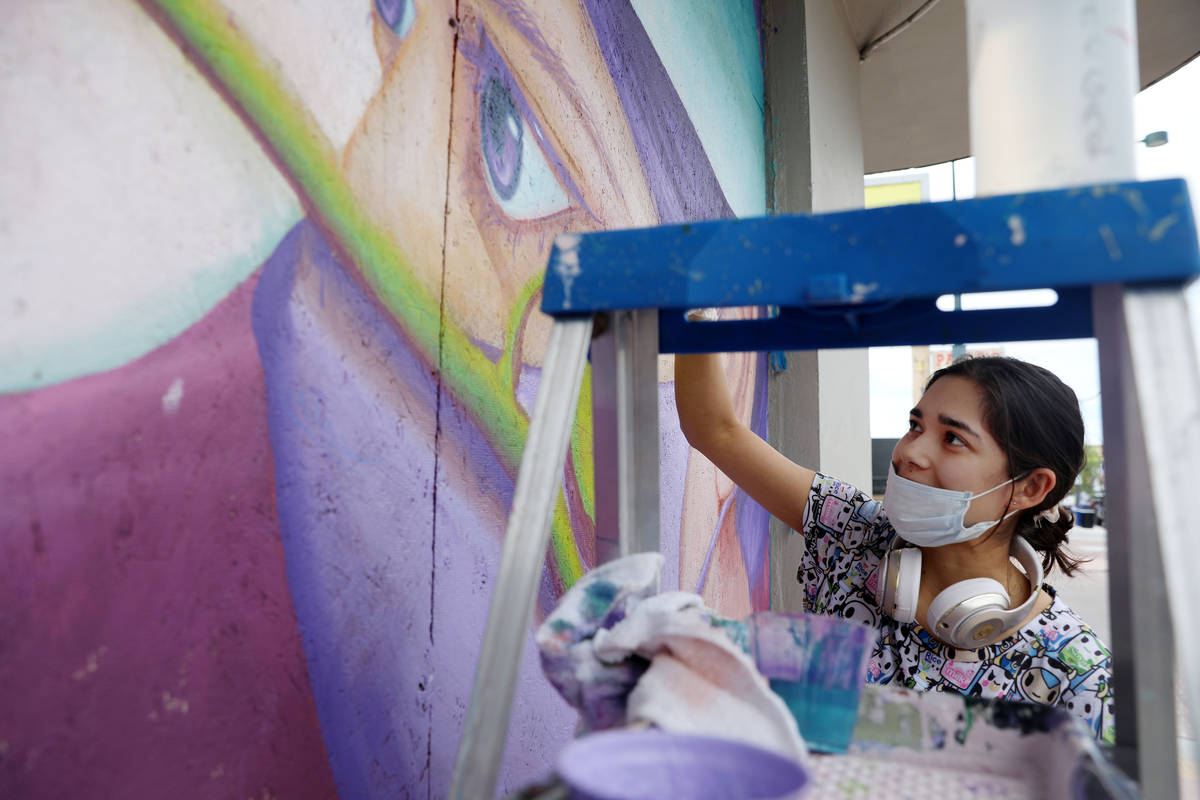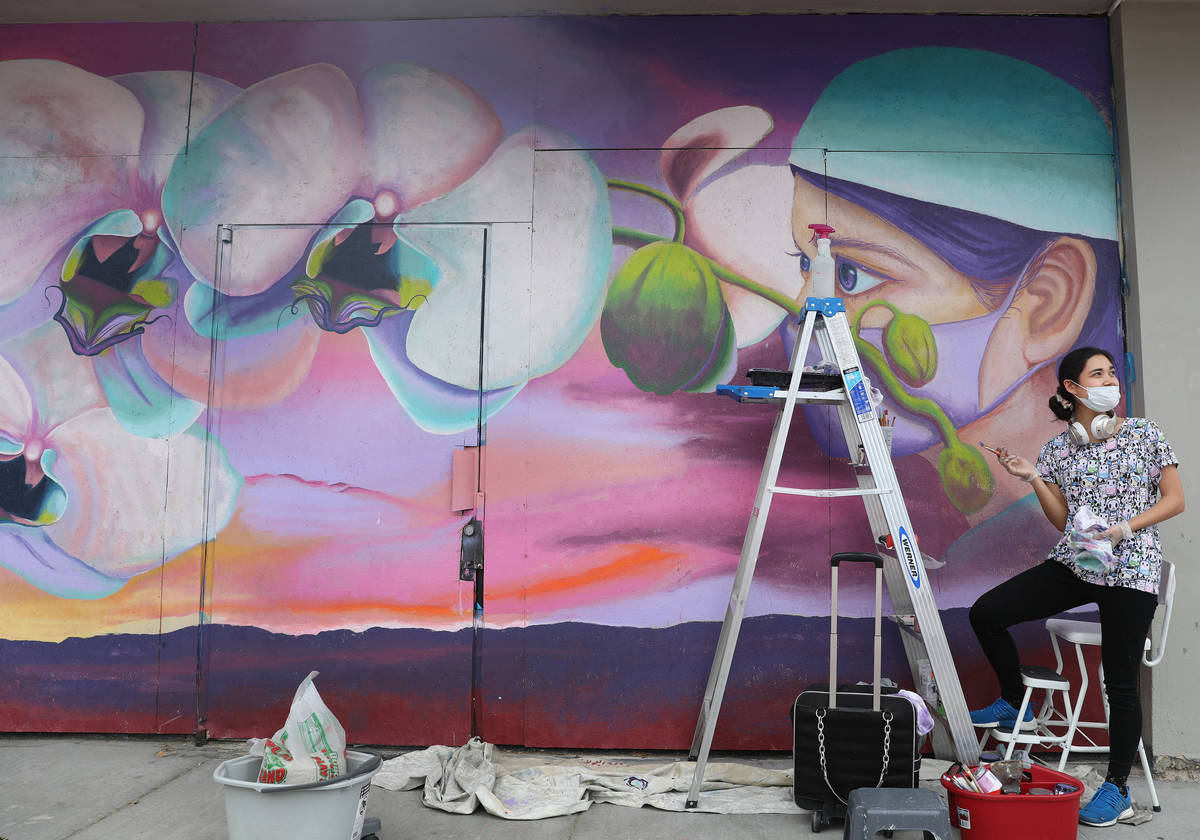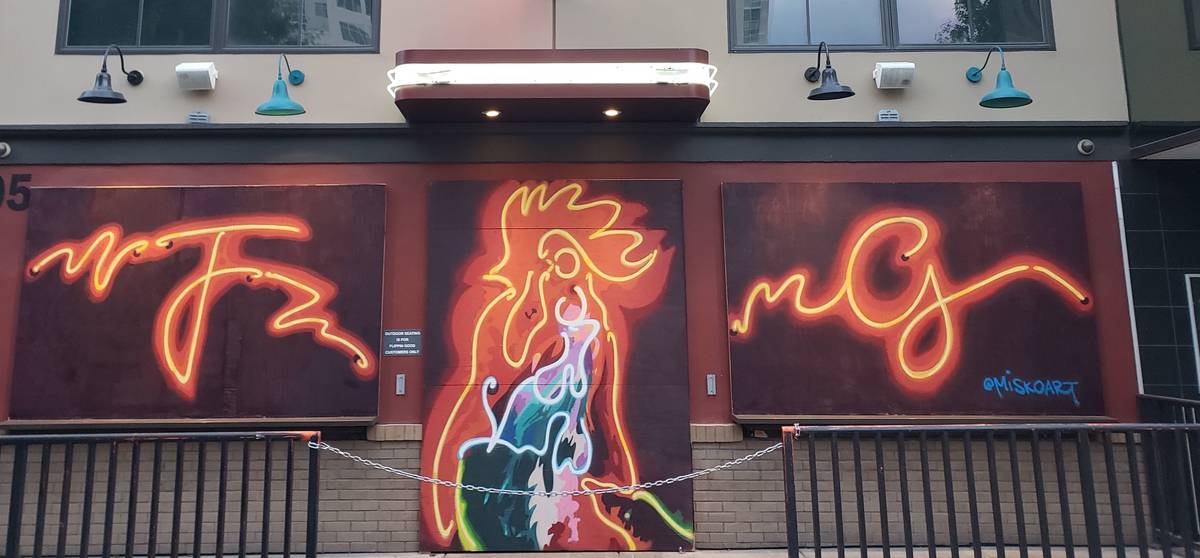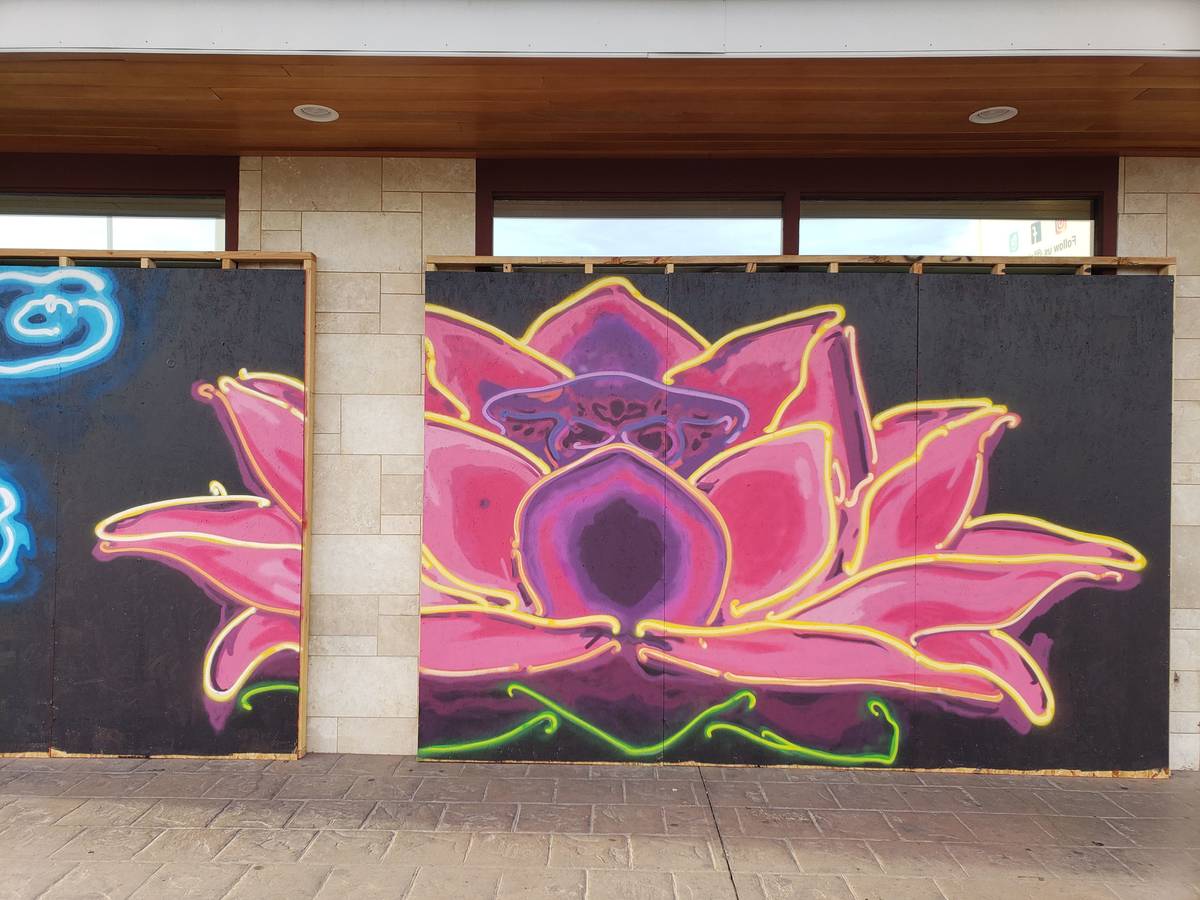Las Vegans embrace art as a conduit for connection
Days after the small businesses in the Las Vegas Arts District locked their doors and boarded up their windows, local artists descended onto the stretch of Main Street, turned the plywood into blank canvases and covered them in images of joy and hope.
Since the conversion two months ago, the drive to create and beautify has extended from downtown and into Las Vegas’ suburbs, where professional and hobby artists have used art as a conduit for connection.
At a time when people are starved for face-to-face interaction, art has become a welcome and accessible means for people in Southern Nevada to find comfort, control and communication in something tangible.
A ‘COVID-19 tourist destination’
“I think this is the first COVID-19 tourist destination,” Derek Stonebarger says of the murals that cover his ReBar tavern and the businesses of his neighbors. “People are coming out for drives and riding bikes. They can all keep distant and it’s a safe place. It’s all been so positive.”
In exchange for little or no money, artists painted vibrant images and positive messaging on the walls of the Arts District’s bars, restaurants and stores. When the businesses reopen, the murals will be auctioned off for charity. 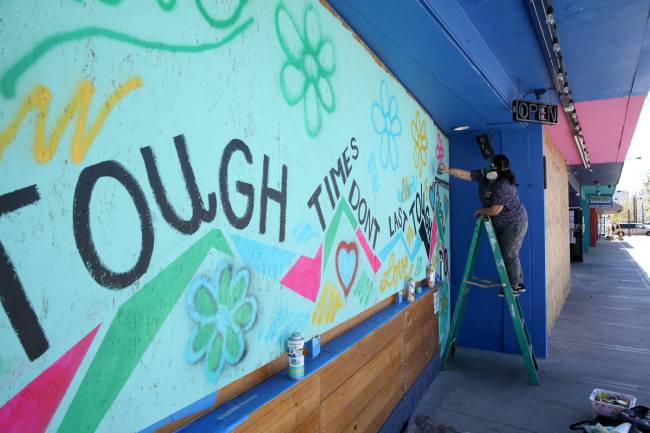
The move inspired an incentive program through the city of Las Vegas, offering businesses grants of up to $2,000 for the boarding up and securing of buildings as long as art is provided on the facade.
Art for artists
One artist who contributed a mural is Brent Holmes, who runs the audience-based performance group RADAR.
He says that, in the early days of quarantine, he felt anxious and upset. He was disappointed about needing to cancel plans including a RADAR event.
“I was having close to hourly anxiety attacks,” Holmes says. “Alisha (Kerlin) from the Barrick put out a call for pandemic drawings, and it got me to sit down and start drawing. When I started drawing, I realized I could really get into it. It stabilized my mental health to some level.”
The practice of making daily drawings as part of a program by the Marjorie Barrick Museum of Art at UNLV helped inspire Holmes to film a Western-style video on the Strip with other members of RADAR in which they, from 6 feet apart, imagined the empty boulevard as an architectural canyon.
“Art is an attempt to communicate more deeply than other forms. It’s taking something that’s not tangible and bringing it into the world,” Holmes says.
Pandemic drawings
The Barrick Museum has received nearly 1,000 submissions for its daily pandemic drawings project in which artists respond to prompts such as “draw a virus as if it were a person” and “draw the people you love.”
Kerlin and the museum staff launched the daily prompts in an effort to encourage positivity in the early days of lockdown.
“Art is a great way to communicate. It’s a way to articulate things, especially during a hard time,” Kerlin says. “It’s saying ‘I made this for you. I miss you. I hope you’re safe. Here’s a gift.’ As artists, no matter what, you’re thinking of an audience.”
The Nevada Museum of Art in Reno also launched monthly programming to encourage art at home.
“I believe that the power of art to communicate and artists’ ability to be great storytellers of the human condition, allows society to share experience and hopefully grow as a result,” says Heather Harmon, director of the museum’s Las Vegas location.
Fremont East murals
Utilizing the incentive program, several businesses in Fremont East and the greater downtown area also collaborated with artists to create murals on their buildings’ plywood.
Jerry Misko completed seven murals, including ones for the restaurants Le Thai and Lotus of Siam. 
“All the big projects I had scheduled were canceled or postponed,” Misko says. “I saw the city was offering $2,000 to businesses to put up boards. I had to do seven gigs to get paid two-thirds of what I would have made for one previous gig.”
Misko says that while he was motivated by finding work and getting out of the house, the murals also gave him a way to help his community and the owners of businesses he frequents.
“I think the city realized a big driver for downtown is that it’s a place for art,” Misko says. “Boarded up, it looks like a shanty town. With art, it feels like a pause rather than a destruction. It communicates that they’re going to reopen.” 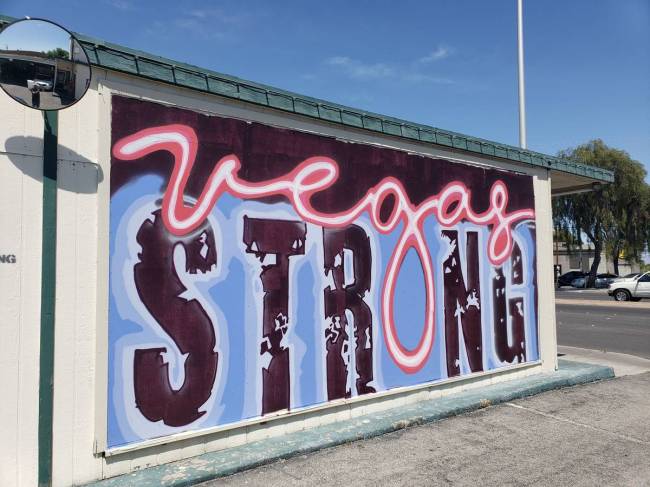
Photos as storytelling
In the days immediately following the closure of casinos, professional and amateur photographers took to the Strip and downtown areas to chronicle the imagery of empty tourist corridors.
Tony Carnevale, who owns the Carnevale Gallery at Caesars Palace, captured stylized images of the empty boulevard. 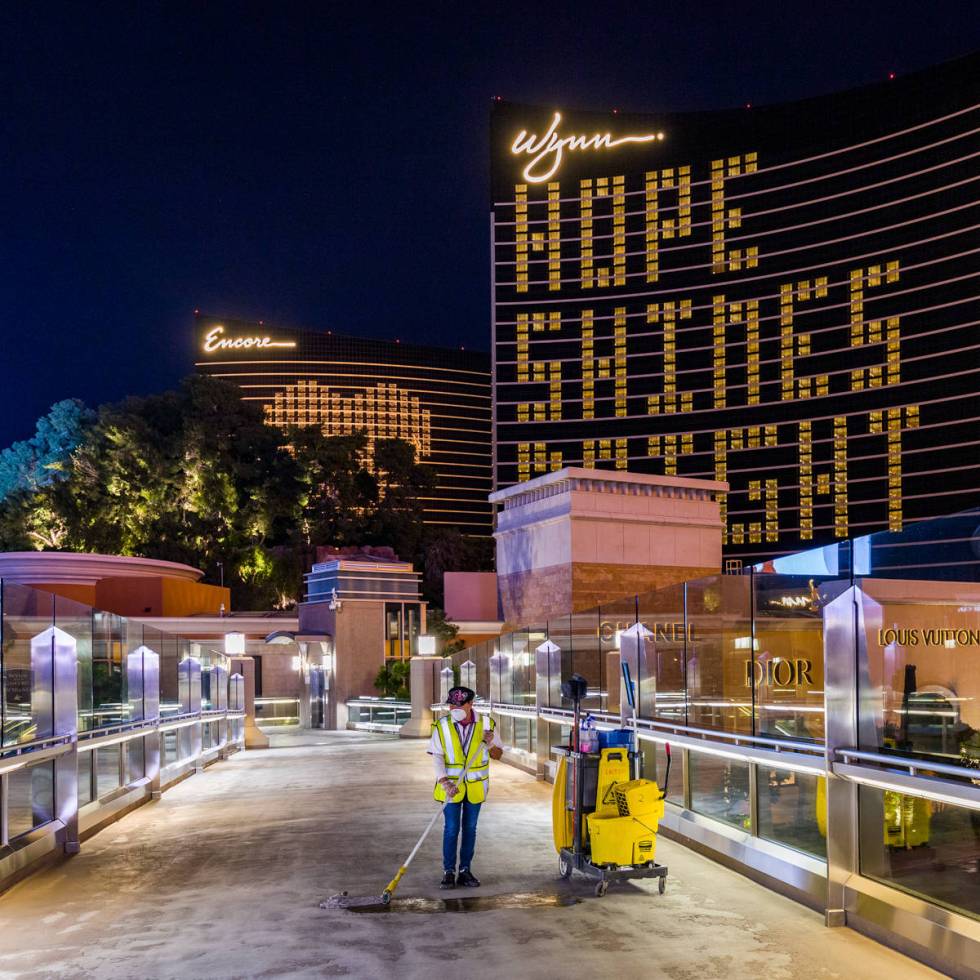
“Ultimately, I want to be able to tell the story of what was happening during this important time,” Carnevale says. “It has affected people who live here, tourists who come. I wanted to tell this story through photos.”
Crafts for community
The need to make art can be found most commonly in Las Vegas communities, where neighbors are leaving painted rocks on sidewalks, grocery customers wear fabric face masks hand-stitched by friends, and hundreds of families are gardening or baking sourdough bread for the first time. 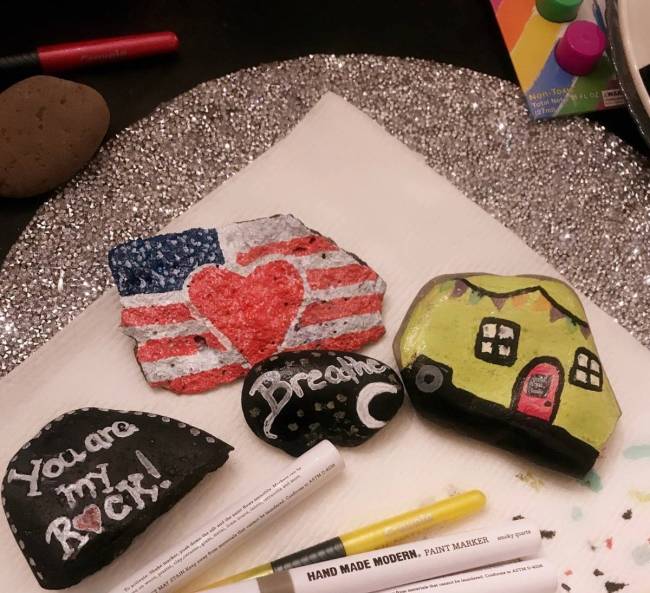
“I think any time you make something, it’s art,” says Mary Ann Racheau, 70, who has stitched hundreds of $5 and $8 masks for friends and neighbors.
In Sun City Anthem, 70-year-old Lynn Noonan has sewn over 100 face masks that she shipped to friends and family throughout the country. 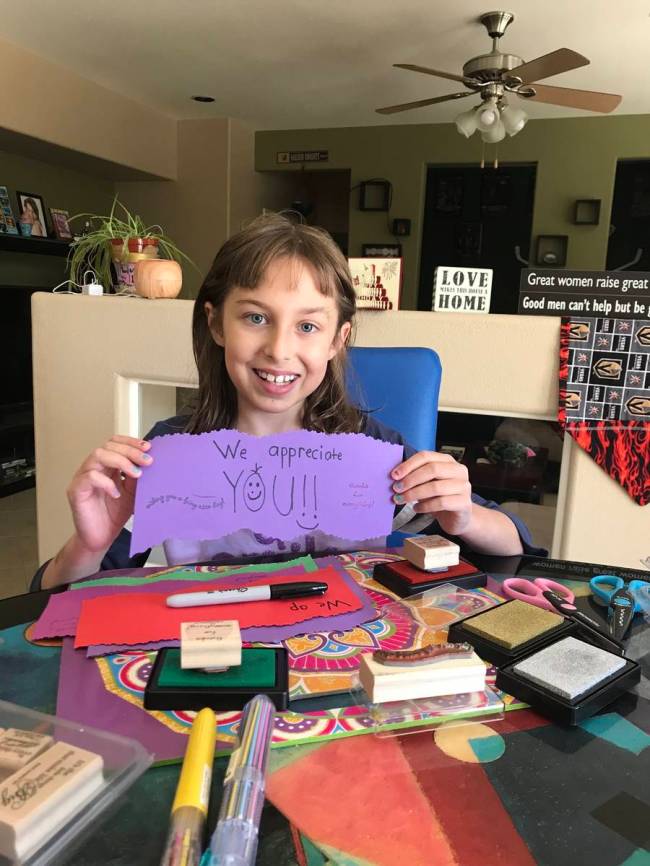
Children have been putting arts and crafts to good use, too. Seven-year-old Braden Hahn has been busy painting rocks and leaving them outside his neighbors’ front doors, and 9-year-old Haylee Hirsch made more than 100 greetings cards for nurses. 
Jade Miron has also been painting rocks and leaving them along trails in her community in Madeira Canyon.
And Brian Gardner is painting rocks most days, to replace the ones that his neighbors find and keep.
“In 1962, my dad taught me a lesson, to try and leave any area in better shape than I found it,” Gardner says. “It’s a difficult time. This is me leaving the world better than I found it.”
Art into Phase One
After closing Majestic Repertory Theatre, artistic director Troy Heard found himself with a surplus of free time and very little to do.
“As a producer, I have to have control,” Heard says. “For people who feel they don’t have control anymore or their day-to-day is gone, one thing you can control that’s healthy and positive is something you make.”
For the first weeks of lockdown, Majestic hosted a weekly interactive performance online featuring a character from its most recent production, “Garden Party.” 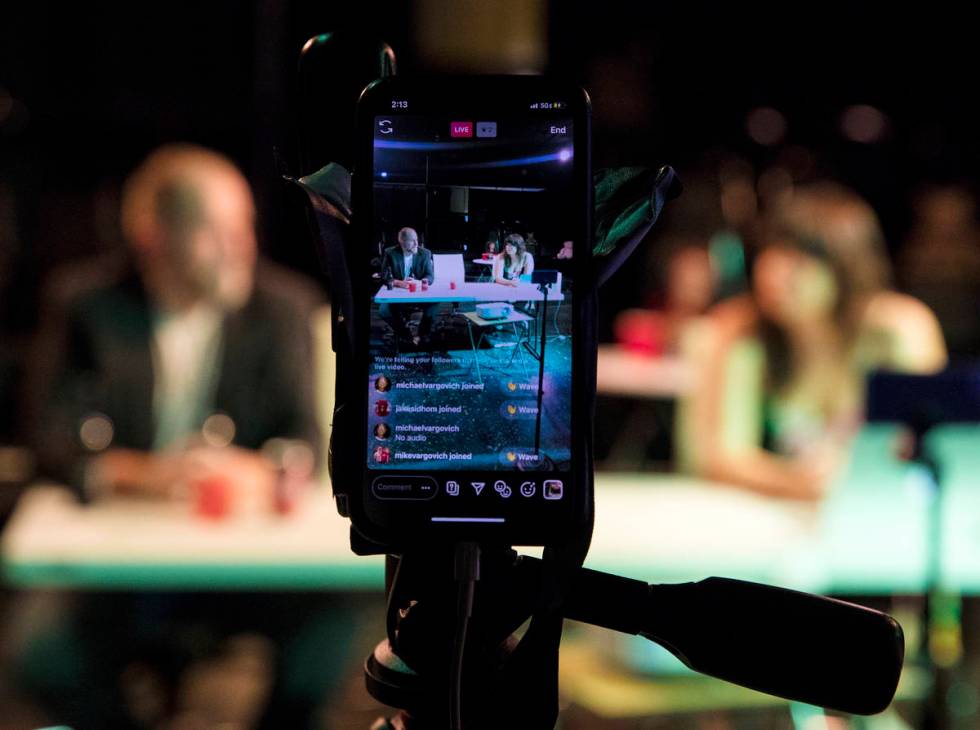
On Friday, Majestic Repertory went one step further by staging its first drive-through theater.
“We have a retail license. So we are able to sell a shirt and mask curbside,” Heard says. “And we happen to have extraordinarily talented staff who will perform for you while you get served.”
The non-narrative performances will feature a variety of acts, including burlesque dancers and artists from RADAR. 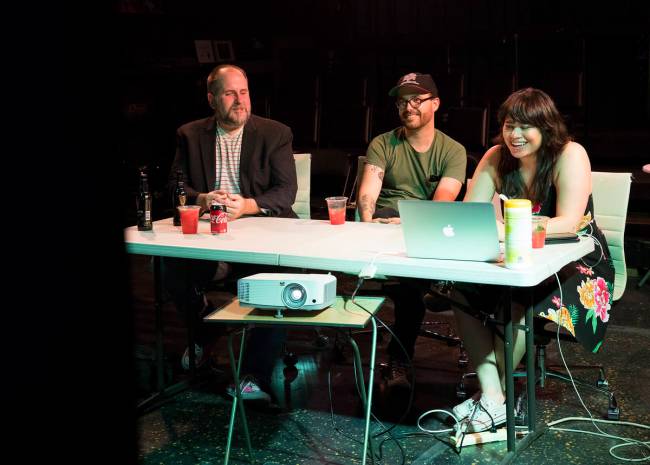
“I think we need to connect and to coexist,” Heard says. “We have a hunger for storytelling and sharing space.”
Contact Janna Karel at jkarel@reviewjournal.com. Follow @jannainprogress on Twitter.



